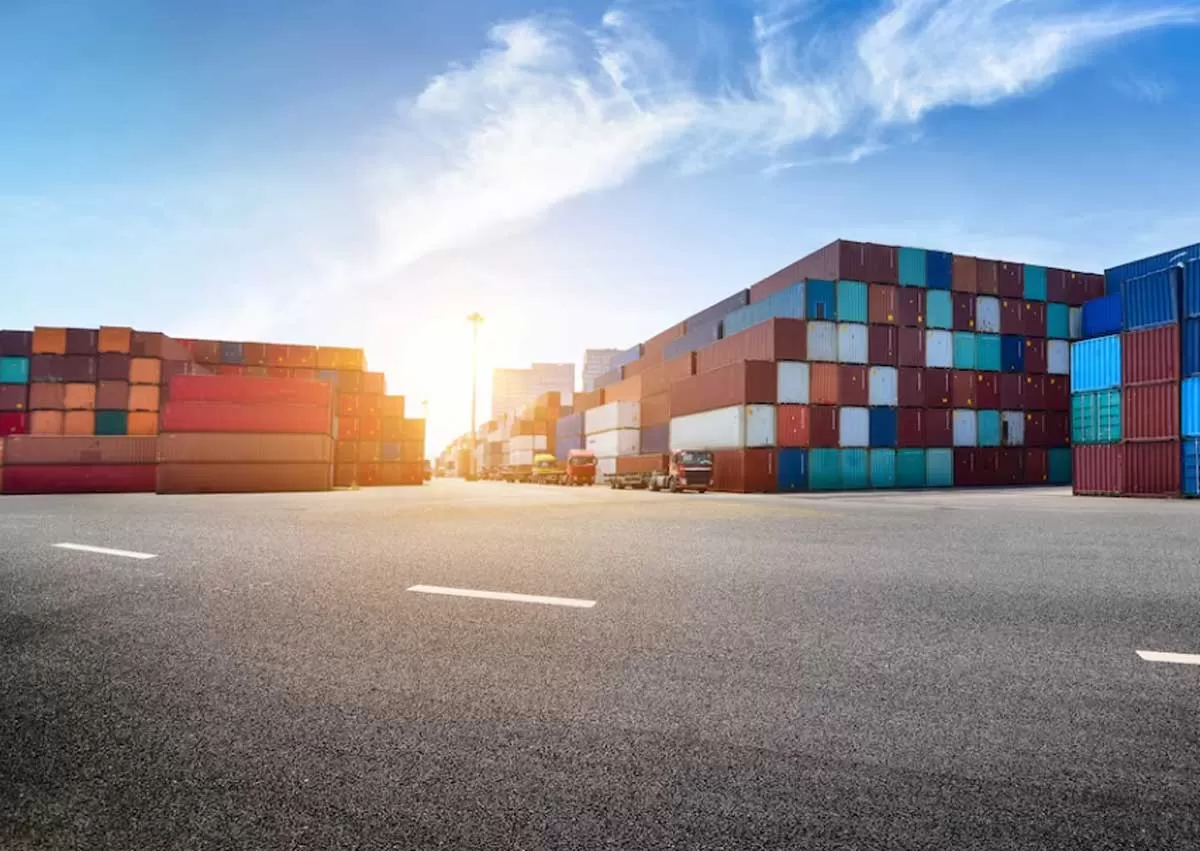As India undergoes the world’s biggest energy transition, embracing renewable energy is not just about environmental responsibility but also a path towards sustainable economic growth, reminds Moglix Founder & CEO Rahul Garg.The new solar systemSolar has the best CO2 avoidance capacityIndia is betting big on solar energy over the next decadeBy 2030, India will be inclined towards a solar-driven economyEngineering procurement construction and Independent power producers need to come together to solve for enhanced unit economicsProject management is the key to narrowing down time and cost overrunsThe world’s fastest-growing major economy is also leading the world's biggest energy transition, shifting from fossil fuels to a clean energy future powered by wind, solar, biomass, and green hydrogen. This green transition can create new manufacturing, installation, and maintenance jobs while reducing reliance on expensive imports and emissions that harm public health. Embracing renewable energy is not just environmental responsibility, but a path to sustainable economic growth for India.Through renewable energy adoption, India aims to reduce the economy’s carbon intensity by 45 per cent by 2030, over 2005 levels. Leading the renewable charge for India is solar energy. It already represents 43 per cent of the country’s renewable energy capacity, with the total solar capacity expected to increase 3.5x by 2030. That will help India avoid nearly 2500 million tonnes of carbon dioxide emissions. However, this is only one piece of the puzzle in India’s aim of meeting half of all its energy requirements through renewable sources by 2030.The energy transitionConventional fuel sources still account for around 60 per cent of India’s total installed power capacity. However, in FY2024, renewable energy sources contributed 71 per cent to the new power generated in the country with solar energy alone accounting for 81 per cent of the renewable energy addition. With these additions, India stands at fourth globally in terms of installed capacity of renewable energy. The total non-fossil fuel capacity, including large hydro and nuclear, crossed a significant milestone, reaching over 200 GW this year. The government’s ambitious target is to reach 500 GW of renewable energy capacity by 2030, reducing carbon emissions by 1 billion tonnes from 2023 to 2030. To achieve this, the Ministry of New and Renewable Energy has been issuing regular tenders for large-scale solar and wind projects, reducing the dependence on fossil fuels. Coal, which accounts for 53 per cent of India’s total energy capacity, is expected to contribute only 33 per cent at the turn of the decade. Meanwhile, solar energy capacity representing only 13 per cent of the current capacity will increase substantially to 34 per cent during the same period, becoming the nation’s foremost energy source. Several key policy interventions are fueling these ambitious clean energy targets. The PLI Scheme for Original Equipment Manufacturing (OEM) focuses on domestic manufacturing of solar panels and battery storage. It has led to a robust pipeline of 78 projects with a combined capacity to produce 78.2 gigawatts (GW) of solar cells and modules annually. This translates to potential investments of `4.96 trillion and around one million new jobs. PM-KUSUM for Distributed Renewable Energy initiative promotes setting up small solar power plants by farmers. It has 23 projects in the pipeline with a total capacity of 8.7 GW, attracting investments of `228.55 billion and a projected CO2 emission reduction of 281 million tonnes (MT).The Rooftop Solar PV Systems programme incentivises installing solar panels on rooftops. With 99 projects underway, it has a potential capacity of 2 GW with the potential to avoid 80 MT of CO2 emissions and create 18,000 jobs. The policy on Utility-Scale Renewable Energy Power Generation focuses on large-scale solar and wind farms. It boasts a massive pipeline of 360 projects with a combined capacity of 103 GW. The estimated investments stand at `3.73 trillion and the potential for CO2 emission reduction is significant at 3,989 MT. These projects are expected to generate nearly 800,000 new jobs. Recognising the importance of electric vehicles, the policy on EV Charging Infrastructure aims to create a robust charging network. With 70 projects underway, it has the potential to establish 500,000 charging stations, attracting `1.4 trillion in investments and creating 1.5 million new jobs.India Inc.'s green gigawattsBut India’s clean energy revolution isn’t a solo act; it’s a collaborative effort fueled by the vision and investments of some of the country’s leading corporations. Several companies have set targets of achieving net-zero carbon status in the 2030s. Through investments in large-scale projects, these companies are helping address India’s‘energy trilemma’ of ‘affordability, sustainability, and security’.One of India’s leading conglomerates has committed to investing `750 billion in various new energy projects, including a 5,000-acre giga complex that will house five giga factories for photovoltaic panels, fuel cell systems, green hydrogen, energy storage, and power electronics. The complex will be among the largest integrated renewable energy manufacturing facilities globally. Another industry leader plans to set up the world’s largest single-site renewable project in Gujarat to be five times the size of Paris. Renewable energy corporations are also betting big on green hydrogen as the ultimate source of dense green energy. The hydrogen-driven revolution can provide clean energy to India at lower costs and aligns with India’s National Hydrogen Mission. Clean hydrogen production could be the key link that helps India become a net exporter of green energy for the first time. The industry is also focusing on green ammonia with the construction of a state-of-the-art green ammonia facility in Gujarat worth `24 billion underway. Once completed, the facility is expected to produce 130,000 tonnes of green ammonia annually and create over 5,000 jobs in the region.Funding the leapThe International Energy Agency (IEA) estimates that India needs an average of $160 billion per year until 2030 to achieve its clean energy goals. Research by Standard Chartered puts the total investment requirement by 2070 at a staggering $17.77 trillion. To facilitate such investments, a focus on ESG guidelines becomes critical. Companies with strong ESG practices are more likely to attract global funds seeking sustainable investments. Public-Private Partnerships (PPP) and innovative financing solutions will be crucial to bridge this funding gap.As debt instruments, green bonds raise capital from impact-conscious investors specifically for renewable energy, energy efficiency, and other sustainable initiatives. They can be leveraged to finance the construction of new renewable energy projects, attracting investors who prioritise environmental impact alongside financial returns. International climate funds, established by developed nations, play a crucial role in supporting developing countries like India in their clean energy endeavours. These funds provide grants, concessional loans, and technical assistance, de-risking renewable energy projects and making them more attractive to private investors. PPPs forge a powerful alliance between government entities and private companies. By sharing risks and responsibilities, PPPs can unlock new investment opportunities and accelerate the deployment of clean energy projects. Venture capital and private equity investments provide early-stage financing for promising startups developing next-generation renewable energy solutions. Strategic partnerships with such firms can be explored to gain access to cutting-edge technologies and investment in disruptive clean energy solutions.SCALING THE RE CHALLENGEEnabling the success of Engineering, Procurement and Construction (EPC) solar developers and independent power producers will be key for India to reach the desired scale in its renewable capacity ambitions. The country’s vibrant startup ecosystem can also boost the renewable energy sector. Innovative startups are tackling challenges ranging from grid integration to advanced battery storage solutions. For instance, an IIT-incubated startup is developing sodium-ion batteries as a viable alternative to lithium-ion batteries. The startup uses agricultural waste such as paddy straw, sugarcane bagasse, coconut shells, and cattle manure to develop these batteries and help reduce India’s dependence on scarce elements like lithium, cobalt, or nickel. Startups like these bring fresh ideas to meet India’s clean energy goals. Their agility can help India overcome renewable energy challenges and optimise project efficiency.At the same time, project developers and independent power producers must implement more robust business practices to help fuel the nation’s ambitions. They can secure cost-effective materials and equipment through strategic sourcing practices. This involves building strong supplier relationships and optimising procurement processes. Project-specific needs can be addressed through custom fabrication of solar mounting structures and other components. This can ensure optimal use of space and improve project viability. Cash flows can be managed more effectively by accessing supply chain financing solutions. This can bridge the gap between upfront costs and project completion. Cloud-based software as service (SaaS) tools can be leveraged for real-time project monitoring and data analyses. These tools can enhance decision-making and identify potential roadblocks.Novel energy sources like green hydrogen – produced by splitting water – are other important components enabling India’s push towards clean energy. Green hydrogen offers a clean fuel alternative for sectors like transportation and industry, which are difficult to decarbonise with existing technologies. The country has already taken a plunge in the area by launching the National Green Hydrogen Mission with an outlay of Rs.1.98 billion with a target of 5 MMT production per annum of green hydrogen.Futuristic renewables like green hydrogen promise a significant transformation for manufacturing and infrastructure in India. Green hydrogen can replace fossil fuels in steel, cement, and chemical production, significantly reducing carbon emissions from these hard-to- abate sectors. Unlike electricity, hydrogen can be easily stored and transported over long distances, to enable clean energy delivery to remote industrial locations. Hydrogen fuel cells also offer a cleaner alternative for powering heavy-duty vehicles like trucks and ships, which are crucial to sustainable infrastructure development.The future of India's clean energy journey is bright. The IEA projects an $80 billion market for green hydrogen and low-carbon technologies in India by 2030. Technological innovation and robust R&D will be instrumental in driving down costs, improving efficiency, and scaling up the production of clean energy technologies. Achieving the vision of a Viksit Bharat by 2047 hinges on sustained efforts, continuous innovation, and a continued commitment to clean energy solutions. By securing adequate funding, fostering a supportive policy environment, and embracing technological advancements, India can not only power its clean energy future but also emerge as a global leader in the green energy revolution. This clean leap forward presents a win-win situation for the environment, the economy, and India’s position on the world stage.About the author:Rahul Garg, a first-generation entrepreneur, founded Moglix in 2015 with a vision to transform the B2B distribution of industrial goods for the manufacturing sector, employing a technology-first approach.

















